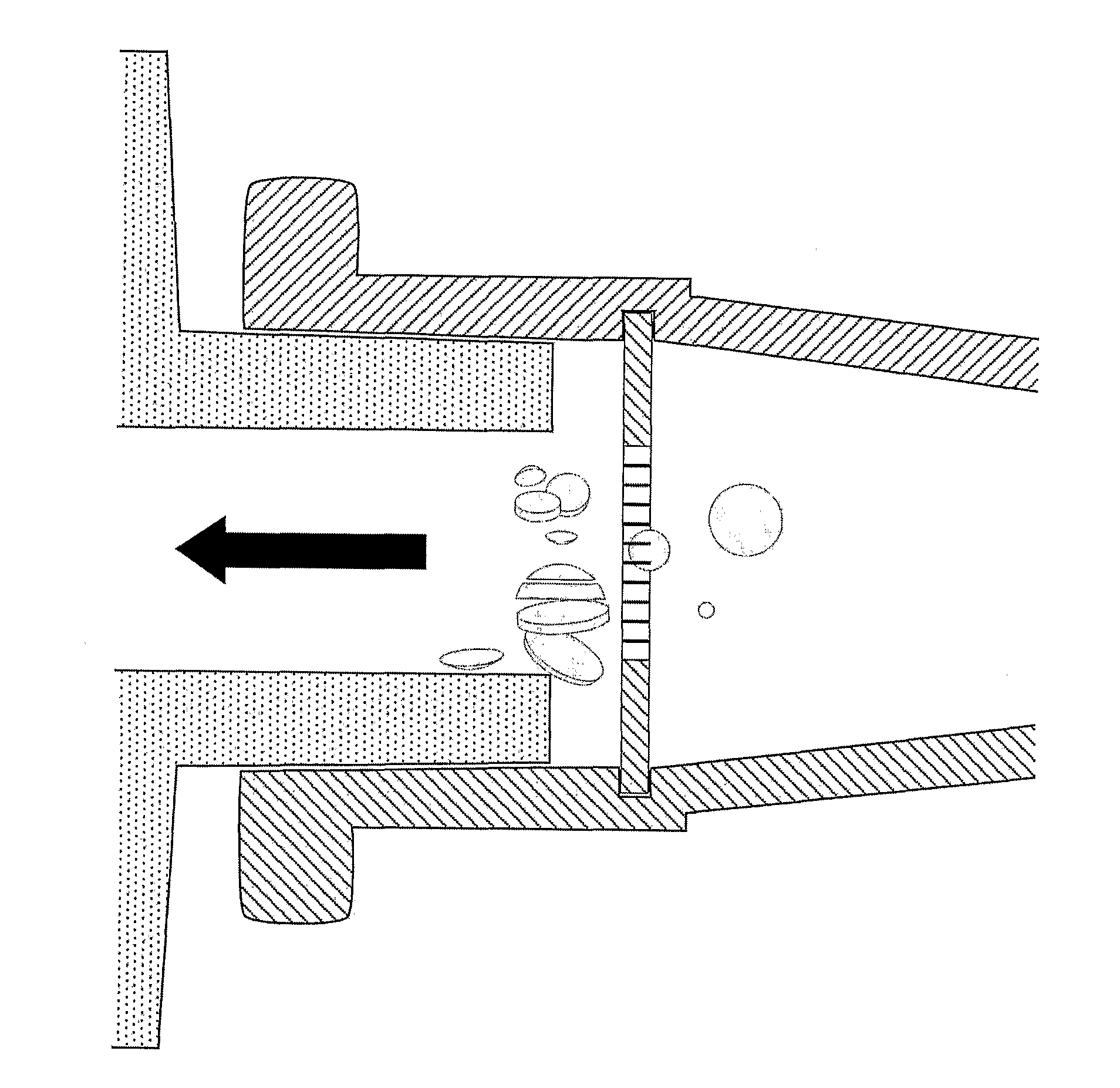Slicing device
a technology of slicing device and micro-grid, which is applied in the field of biological microgrid, can solve the problems of time-consuming and prone to contamination, different cell types are more prone to damage, and the risk of contamination, so as to avoid enzymatic dissociation and facilitate implementation
- Summary
- Abstract
- Description
- Claims
- Application Information
AI Technical Summary
Benefits of technology
Problems solved by technology
Method used
Image
Examples
example 1
[0029]A microgrid can be manufactured by convention microfabrication technologies. The desired projected shape of the microgrid is defined my photolithography on a silicon wafer, outlining multiple microgrids on a single silicon wafer. The exposed and developed wafer is subsequently subjected to wet or dry etching to produce the desired microstructures that compose the microgrid, with the desired beam widths and lengths and corresponding distance between beams. If other pore dimensions, round holes, square grid patterns etc. are desired this is accomplished by modifying the photolithographic mask. After the etch process the individual slicing devices are commonly released from the wafer by conventional wafer dicing saw equipment.
example 2
[0030]One microgrid with a pore size of 100×500 μm and a width of the slicing beams of 30 μm is cast in a polymer cylinder with an inner diameter of 1.5 mm fitted at one end with a 15 cm long stainless steel tube, inner diameter 0.7 mm, and at the other end with an opening fitting on a standard plastic 10 ml sterile disposable syringe. By slowly aspirating and ejecting media containing free-floating cell aggregates through this device, the cell aggregates are sliced into smaller aggregates.
example 3
[0031]Two replaceable microgrids with quadratic pores, size 10 μm, beam width 2 μm, placed in series in a cylinder with luer fittings at both ends. Cell aggregates or pieces of tissue are collected in fluid in a separate container, the pressure in the container increased to force the biological material through the two microgrids, thereby creating a suspension of single cells, without the need of enzymatic dissociation.
PUM
| Property | Measurement | Unit |
|---|---|---|
| size | aaaaa | aaaaa |
| size | aaaaa | aaaaa |
| size | aaaaa | aaaaa |
Abstract
Description
Claims
Application Information
 Login to View More
Login to View More - R&D
- Intellectual Property
- Life Sciences
- Materials
- Tech Scout
- Unparalleled Data Quality
- Higher Quality Content
- 60% Fewer Hallucinations
Browse by: Latest US Patents, China's latest patents, Technical Efficacy Thesaurus, Application Domain, Technology Topic, Popular Technical Reports.
© 2025 PatSnap. All rights reserved.Legal|Privacy policy|Modern Slavery Act Transparency Statement|Sitemap|About US| Contact US: help@patsnap.com



